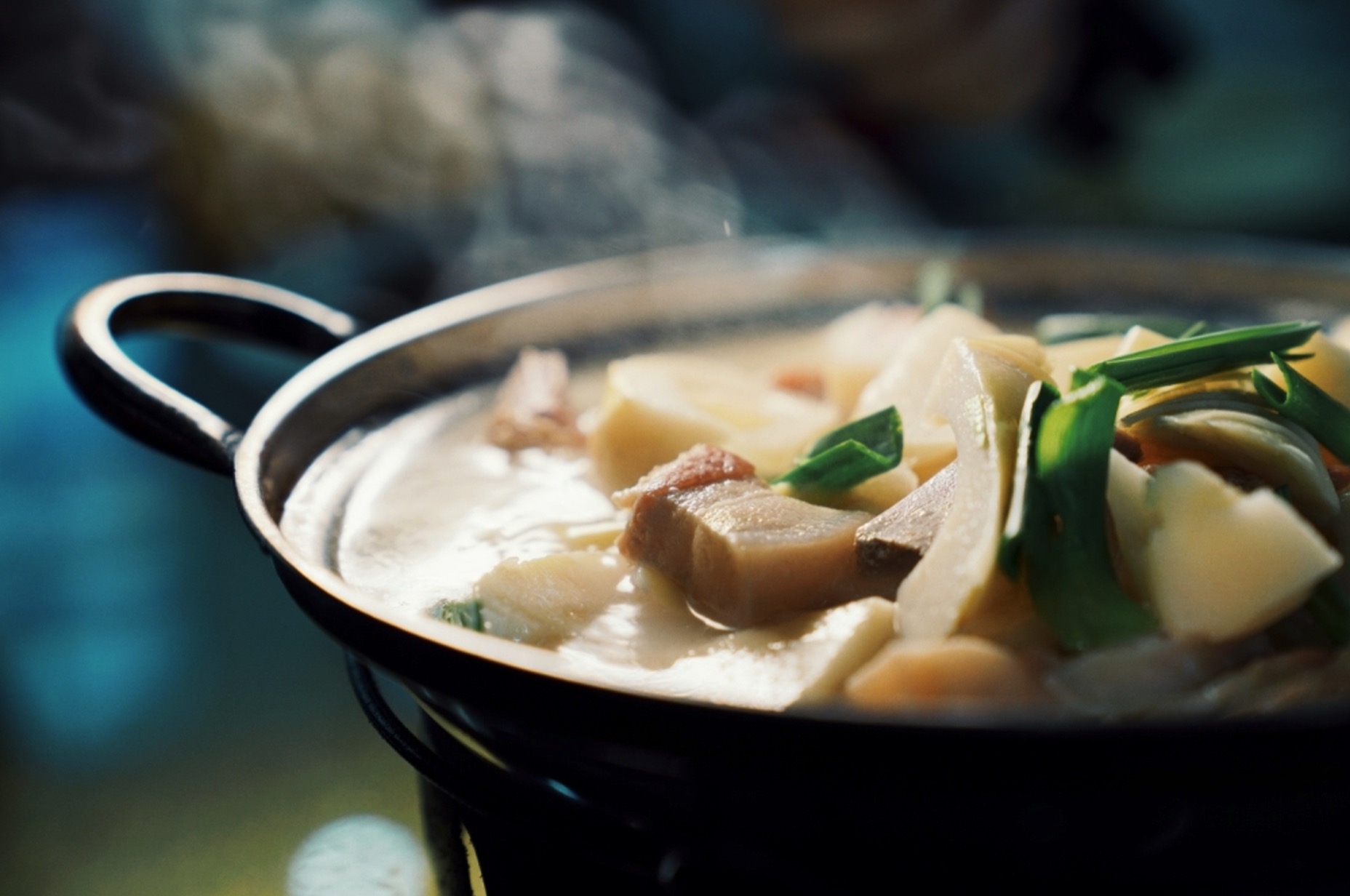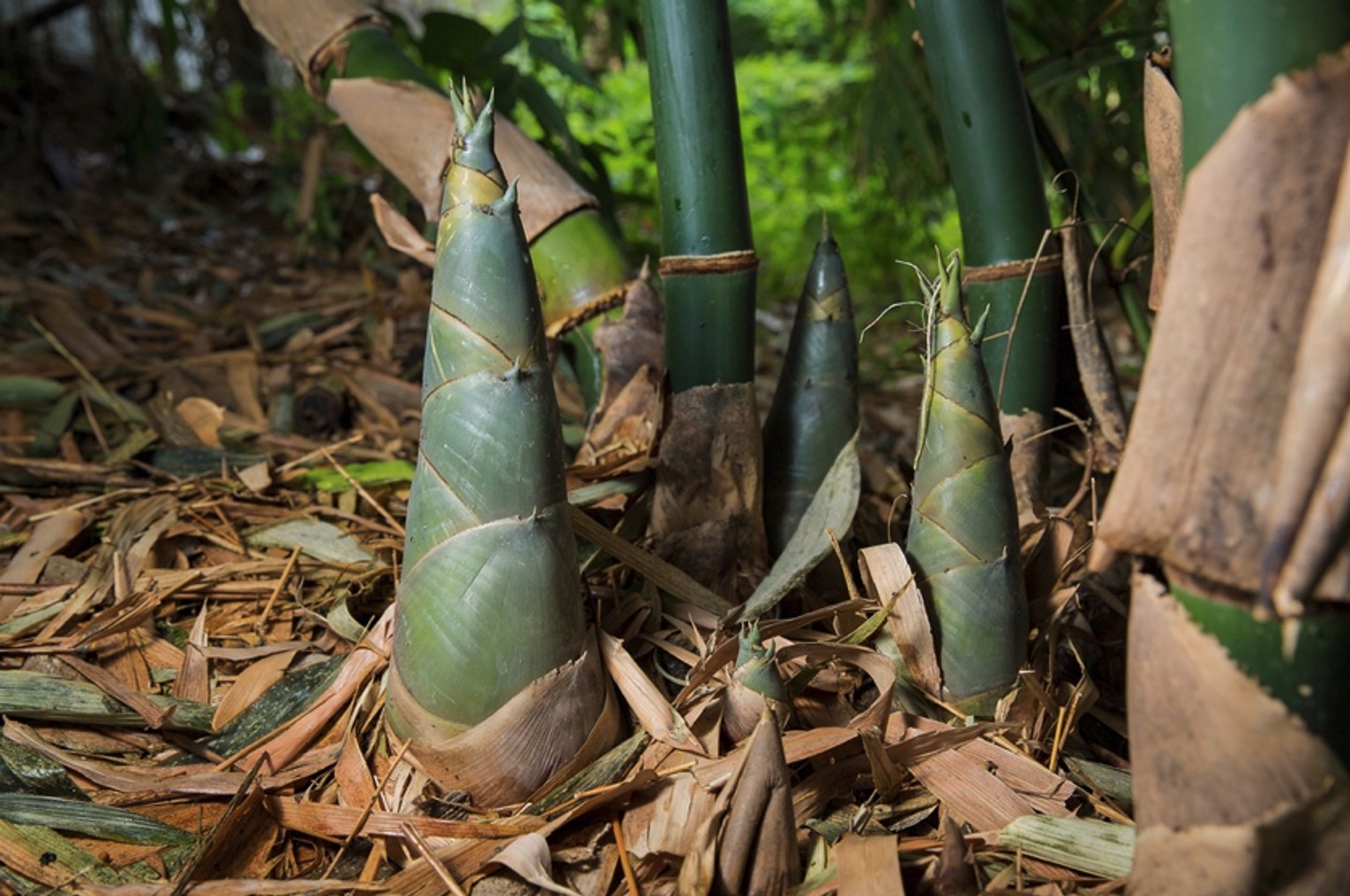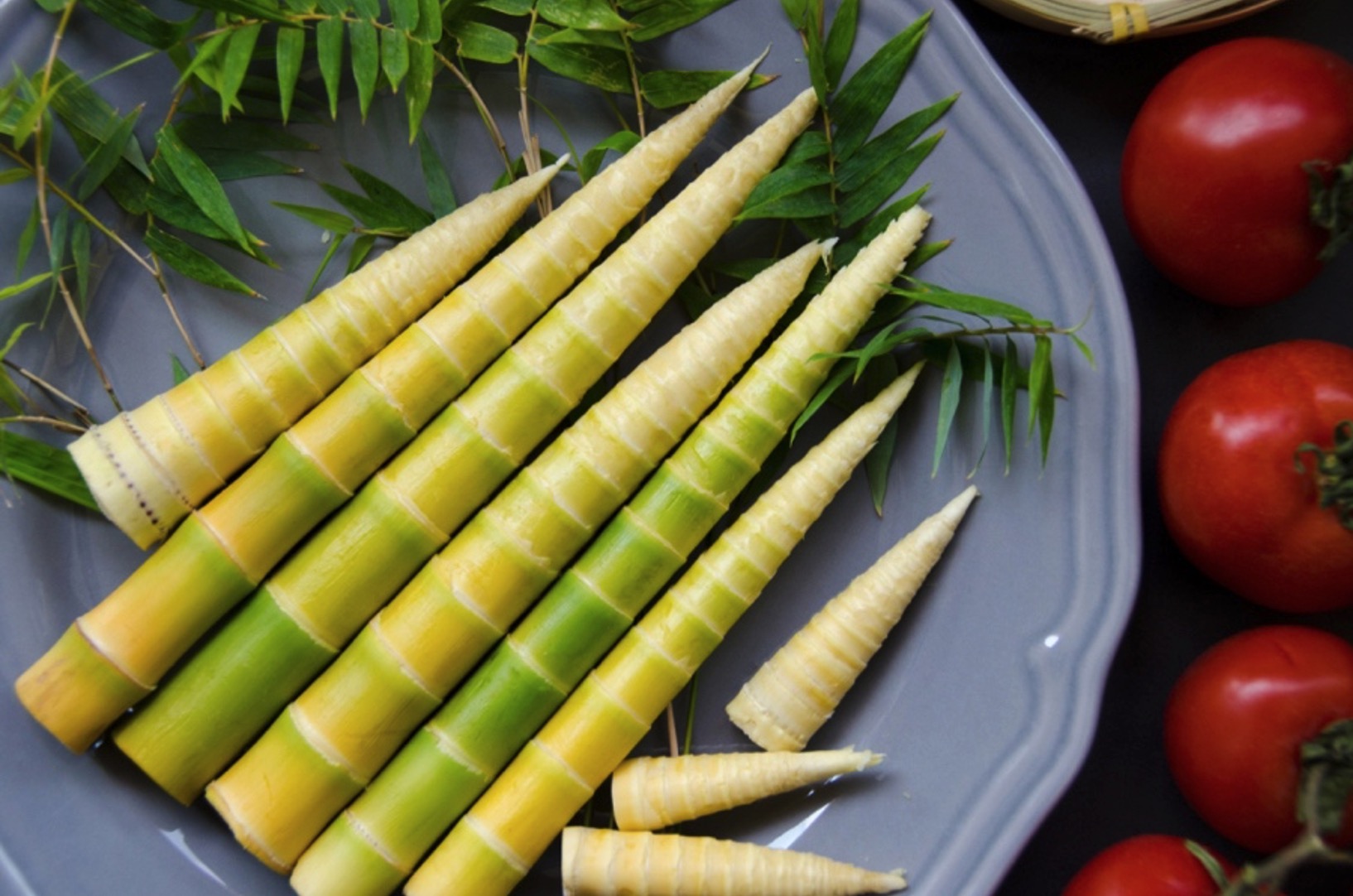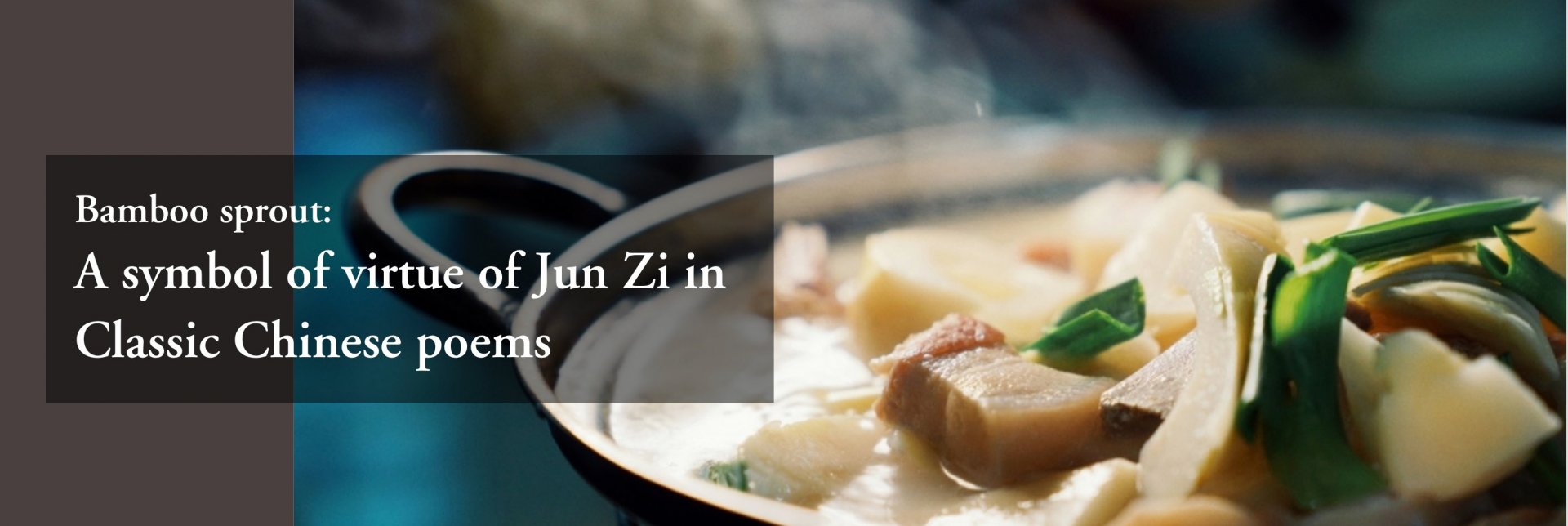Bamboo sprout: a symbol of virtue of Jun Zi in Classic Chinese poems
Since ancient times, bamboo sprouts have been a very important foodstuff in Chinese culture. As early as in Book of Songs (Shijing《詩經》, also translated as Book of Odes or Book of Poetries in various translation), the lyrics of classic folk songs contained descriptions of bamboo sprouts. For example, in poem Han Yi in chapter Greater Odes of the Kingdom (〈大雅‧韓奕〉), there was a respectable person Xian Fu (顯父) who prepared a farewell feast for Duke of Han (韓候) comprising an extensive range of delicate dishes including Baijiu (distilled spirit made from rice), boiled terrapin, fish, and various wild greens, one of which is bamboo sprouts. We should note that, these ancient descriptions of bamboo sprouts were not included in an ordinary folk song, but appear in an official historical record that describes the activities of Dukes and Officiers of the state in Zhou Dynasty. The inclusion of bamboo sprouts in an important farewell feast proves that as early as in Zhou dynasty, bamboo sprouts had already been regarded as a delicacy.

Bamboo Sprouts – A traditional favourite food of Chinese people
From a perspective of cookery, it is easy to realize that bamboo sprouts are popular among Chinese because they are delicious. Li Yu (李漁,1611-1680) in the Qing Dynasty wrote a famous book Diary for my pastime (《閒情偶寄》), in the chapter of Recipes (《閒情偶寄·飲饌部》), Li listed bamboo sprouts as the best among all vegetables. Li told us that people usually appreciate vegetables that have the taste of “pureness, cleanness, full of flavour, and crispy” (清、潔、芳馥、鬆脆), but they don’t understand why some vegetables could be even more delicious than meat. Li believed that the most important quality of such vegetables is “savory” (鮮). Also, he mentioned that bamboo sprouts could be regarded as the exemplar of savory vegetables, thus he hailed them as the first class vegetables. This could clearly demonstrate the superiority of bamboo sprouts among ancient Chinese gourmets. Yuan Mei, a famous writer and critic of poems, was also a gourmet. He wrote the important ancient cookbook Recipe from the Sui Garden (《隨園食單》). Among Yuan’s recipes, bamboo spourts are not only auxillary ingredients, but also main ingredients, for example, slow-cook bamboo sprouts with salted ham (筍煨火肉), braised assorted bamboo sprouts (煨三筍), vegetarian ham (素火腿), ginseng with bamboo sprouts (人參筍), to name a few.

“Yan Du Xian” (醃篤鮮, slow-cook salted ham soup) – a favorite delicacy in Shanghai
Indregients include bamboo sprouts, salted ham, bean curd sheets, and fresh pork. The soup is famous for its savoury flavour)
As a food stuff, the delicacy of bamboo sprouts is widely appreciated by Chinese and is becoming an essential element in Chinese cuisines. It is worth-noticing that across different dynasties in China, bamboo sporuts are the most widely complimented by writers and poets. They loved to adopt bamboo sprouts as a symbol of virtue in poetry and literary writings. Therefore, bamboo sprouts are regarded not only as a beautiful representation of ideal character and moral standard, but also an image reflecting traditional Chinese value.
One of the major meanings of the imagery of bamboo sprouts is their association with Jun zi (君子, repsectable nobles), which takes the connotation of being honest and uncompromising and having a very strict requirement on one’s own moral standards. A famous monk in Song Dynasty, Zan-Ning (贊寧,919-1001) in Illustration of Bamboo Sprouts (《筍譜》) described that green bamboo was famous for its hardiness and unbendable qualities, thus writers and artists in various dynasties loved to write about bamboo sprouts. Fang Yue (方岳, 1199-1262)’s poem Eating Cat’s Bamboo (〈食貓筍〉) in Southern Song Dynasty is a good example of comparing bamboo sprouts to respectable noble. In this poem, bamboo sprouts were described as the “cutie child” (Ning Xing Er 寧馨兒, a slang at that time) of mature bamboo, the shape is like the horn of rhinos, and even more transparent than white jade, even bamboo sprouts are still a baby, one could already see an angel-like slendar beauty in the to-be-grow-up bamboos. The poet love this so much that he is thinking about the bamboo sprouts for the whole spring (一春心事). In another poem “the bitter bamboo sprouts” (《苦筍》), the poet Lu Yau (陸遊 1125-1210) expressed the moral quality of the image of bamboo sprouts at full span. He described the bitter bamboo sprout in his plate as “a baby of white jade” (白玉嬰), which inspired him to write an ode of the bitterness of bamboo. Lu told us that the first segment of bamboo was the bitterest (苦節), meaning that even in its childhood, the bamboo had already shown its honesty and uncompromising quality (耿介種性). Lu then quoted the story of Wei Zheng (魏徵,580-643) in Tang Dynasty who always provided the honest commentary and advice to the emperor despite that such words were hated by the emperor. He imagined that the bamboo was just like Wei Zheng, who confronted the sky and fought with wind and rainfalls. This poem adopts the image of bamboo sprouts to give an ode to Jun Zi (君子, respectable nobles) who are pure, honest and uncomprising.

Bamboo Sprouts in a forest
Among the works that acclaimed for the “honest and uncomprising” qualities of bamboo sprouts, some writers found that the taste of bitterness could be associated with the courageous acts to give honest yet challenging advice to the emperors. This is taken from the common view that bitter medicine is the best medicine. Huang Ting-jian (黃庭堅,1045-1105) a poet in Northern Song Dynasty, shared his experiences and reflections upon eating bitter bamboo sprouts. Wang found that, those who were honest and with high moral standards would often directly confront, being as“bitter but tasteful” (苦而有味) as bamboo sprouts,. These people could help the emperors to effectively rule the country, so they should blossom as if bamboo sprouts. This line of bamboo sprout literature aims at complimenting the tradition of Jun Zi in Chinese culture. Another example is Southern Song Dynasty Poet Li Guang (李光,1078-1159) , who disagreed with prime minister Qin Hui (秦檜, 1091-1155, a notorious figure in Chinese history). For many times, he was punished by Qin to work in remote and impoverished areas. His work A poem about winning bitter bamboo sprouts in a poetry writing game in the seventh of May (〈五月七日分韻得食苦筍詩〉) is a manifestation of his uncomprising morality. This poem begins with the description of the bitter bamboo sprouts in his hometown in the south-eastern provinces. The quality of making one’s taste bud becoming bitter is a metonym of suffering due to keeping one’s moral standard. Li Guang reminded us in the poem that only those honest and uncomprising Jun Zi could truly appreciate the bitter sprouts. The strong taste of bitter sprouts was like the King of Yue Kingdom Gou Jian (勾踐,?-465 B.C.), in Eastern Zhou Dynasty, who used to taste extremely bitter stuff to motivate himself to shed against his shames. This style of writing is different from poems that aim at protraiting bamboo sprouts. More than accurately describing the bamboo sprouts, the authors manifested their subjective perspectives in intense symbolicism in the poem.

Bitter Bamboo Sprouts (苦筍)
Ancient Chinese theories of aesthetics were often inspired by Chinese cuisines, for example, using “He” (和, good mixture) to describe beauty and emphasizing the “aftertaste” of poems. Even the word “beauty”(Mei, 美) itself comes from cookery. According to modern Chinese linguists, the ideograph of Chinese character mei 美 (beauty) is actually rooted from “a big lamb” which have a savory taste and is full of fat. This indicates that the metaphor of beauty often comes from gourmet experience. To conclude, ancient theories of aesthetics were often inspired by experiences in daily lives, but at the same time sublimed into the spiritual value of the works. As mentioned in this article, writers used the symbol of bamboo sprouts, taking its quality of “bitter and not greesy” as the metaphor of Jun Zi’s moral standard, honesty and uncomprising quality. In this way, an ordinary food stuff was sublimed into a theme in literature, which indicates the emphasize on virtue and moral values in Chinese culture. This spiritual tradition passed on from generation to generation. The more you appreciate it, the more you can get from it.
References :
Books
1. 李漁著,孫敏強譯注:《閒情偶寄譯注》(上海:上海古籍出版社,2019年)。
2. 袁枚(1716-1797)著,元江雪注:《隨園食單》(北京:開明出版社,2018年)。
3. 僧贊寧撰,陳仁玉(1212-?)撰,周履靖著:《筍譜 菌譜 茹草編》(北京:中華書局,1991年)。
Articles
1. 趙榮光:〈中國人的「竹筍」食用及其文化意義〉,《农业考古》,2007年第2期,第185-196頁。
All articles/videos are prohibited from reproducing without the permission of the copyright holder.




Welcome to leave a message:
Please Sign In/Sign Up as a member and leave a message謝謝介紹!我很喜歡吃油炆荀,其味香濃有著一種特別津咪!
提及筍,就想起中四時那位文學朱老師,曾經講過一個故事,有關一副對聯提及竹筍:
人物 (一): 老師人稱葉老師
人物 (二) : 女學生名 林茂秀
老師出上聯:
竹筍初飚何日得逢林茂秀
學生對下聯 :
桃花始放幾時輪到葉先生
筍,之於我又回味又有趣!
☺️☺️
#1
Chi Seng Pun
06-02-2023 15:48:52
Prof. Chen,
Your article is great. Thank you so much sharing with us.
#2
WONG STELLA 黄煒陶
06-02-2023 14:56:49